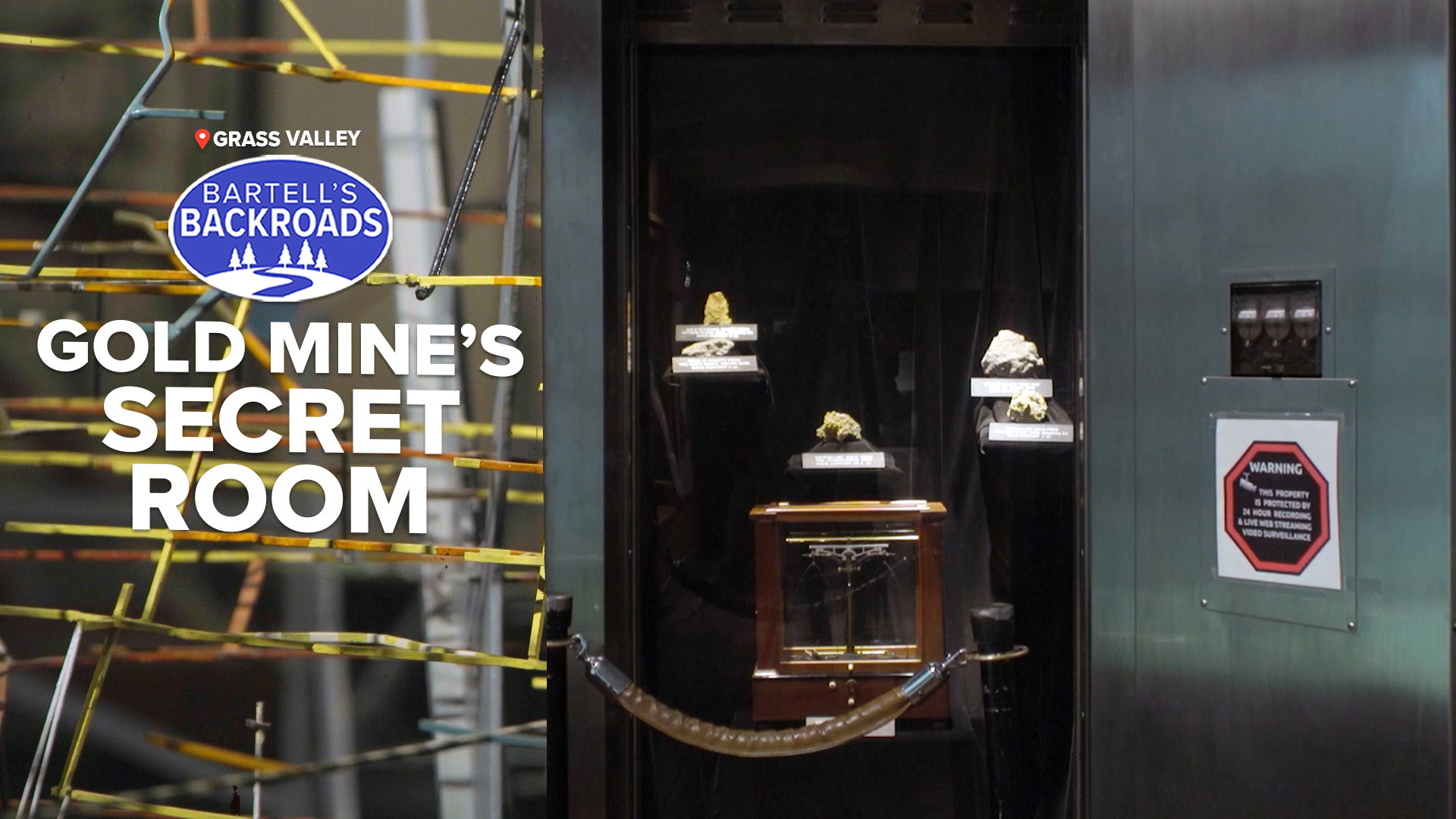GRASS VALLEY, Calif. — In the hills of Grass Valley is one of the deepest and most elaborate gold mines in California. Today, it's a state park but from 1850-1956, the Empire Mine would lower miners down a small opening that dropped hundreds of feet.
It was dangerous and state parks docent Blair Brooksby says the only way down was on a primitive open-air elevator called a man skip.
“They were lowered down about 7 mph,” said Brooksby. “There was one accident where a cable broke. Two men were on board. One man bailed off, another didn’t and the one that didn’t bail didn’t make it.”
Miners weren’t the only ones lowered into the shaft, so was an entire team of mules tasked with moving around heavy rocks.
“Most of them spent their entire working life underground,” said Brooksby.
These days steps and handrails replace the mine’s dangerous elevator. Unfortunately, Brooksby says those steps don’t take visitors into the deep spiderweb of shafts and tunnels.
“It’s full of water. There’s 367 miles of shafts and drifts down below us and they're basically all full of water,” said Brooksby.
Labor laws and low gold prices forced the mine to close in 1956, but before that the Empire Mine was extremely profitable. More than 5.8 million ounces of gold were extracted, and it was all thanks to giant water pumps removing water so miners could dig.
“When the mine shut down in 1956, the pumps were shut off and it only took nine months for the shafts to fill up with water,” said Brooksby.
TAKE A TRIP ON BARTELL'S BACKROADS:
► See an interactive map of everywhere John has visited on the backroads
► Watch all of the Backroads videos
► Follow John on Facebook
The gold-filled mine shafts may be underwater, but if you walk into “The Secret Room,” you can see where the gold is hiding.
“It’s not secret anymore, but when this was an active mine, this was a lucrative source of information,” explained park interpreter Jean Rhyne.
Inside the “not so secret room” is a 3D map of the mine shafts. At first glance it looks like a mess of wires, but if you look closely, it’s a scale model of the mine used to map out where gold was.
“They wanted to keep it a secret because if anybody else from other mines saw this they could see where the really good veins of gold were and drill down over to it,” said Rhyne.
Mine owner William Bourn invested a lot of money into extracting gold and it paid off. He lived a lavish lifestyle directly above the mine. You can see if for yourself by touring the elegant club house or his grand cottage.
“This is 4,600 [sq.] ft. Mr. Bourn’s main house was 10,000 sq. ft. that’s why they referred to this as the cottage. [It was] all redwood,” said Brooksby.
State parks also keep some of the mining equipment in working condition. Check out the blacksmith shop or see the working gold or rock crusher called a stamp mill.
Visit their website for information about hours and tours.
ANOTHER WAY TO STRIKE GOLD ON THE BACKROADS: Go hunting for a fortune at Placerville's Gold Bug Mine.



















